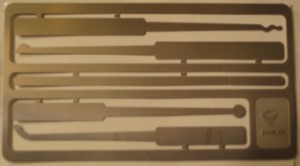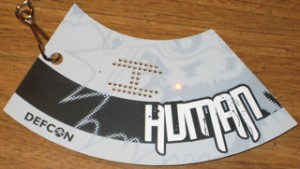Dereu and Sons Manufacturing Company (aka Spy-Coins.com).
Back many thousands of years ago, my elementary school library was full of books like F. B. I. The “G-Men’s” Weapons and Tactics for Combatting Crime and other non-fiction children’s books about the heroic exploits of the Federal Bureau of Investigation. (Remember, these were elementary school libraries, and this was before Hoover’s death; they didn’t have books like The FBI Nobody Knows
. And I wasn’t reading Rex Stout
at that time, so I didn’t enough to be able to seek it out elsewhere.)
Anyway, one of my favorite stories was the one about Rudolph Abel and the newsboy. Not because I had any real investment in catching Russian spies, but because I thought a hollow nickel was incredibly cool, and I wanted one badly.
Flash-foward mumble mumble years to DEFCON 17. What do I find at one of the vendor tables? Yes! Hollow nickels!
Since I was older and more mature, though, a few thoughts came to me. One was that I didn’t have a whole lot of cash on me at the time, and using an ATM at DEFCON…might as well go ahead and pull on the Bad Idea Jeans. Another thought was that a hollow nickel might be cool, but what are the chances I wouldn’t end up spending it by accident?
So I took some notes, surfed the web, waited until I got home and someone had a birthday, and then placed an order…

